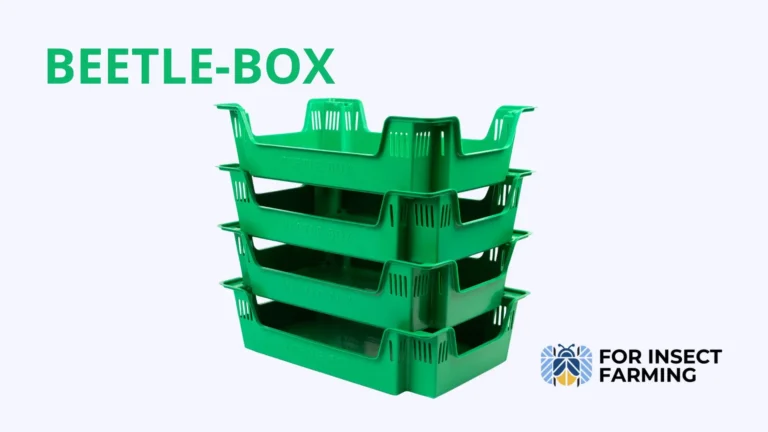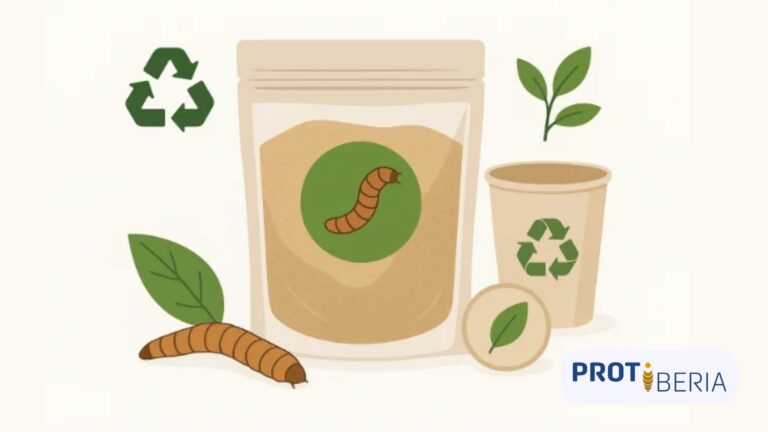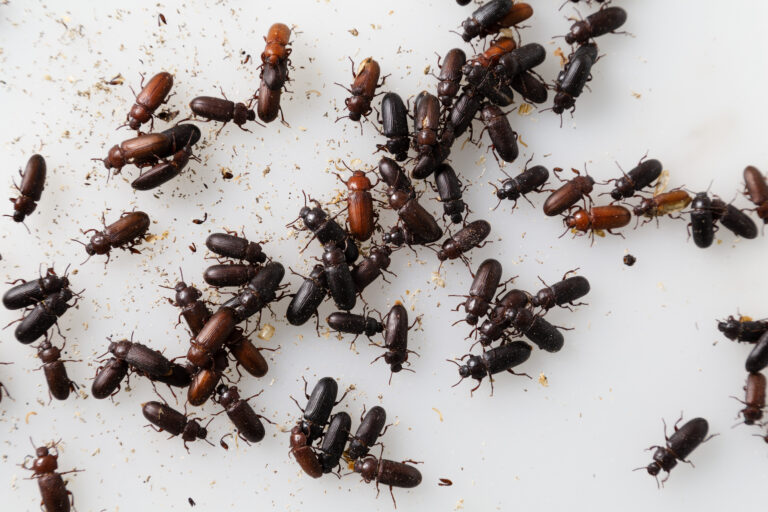| The frass of Tenebrio molitor has been demonstrated in numerous articles and studies to be effective in improving soils and controlling pests and diseases. But do we know the key to its success? |
In the constant search for sustainable and environmentally friendly solutions for agriculture, Tenebrio frass emerges as a valuable resource with a wide range of beneficial applications for agriculture, due in part to the presence of chitin.
Chitin, a structural polysaccharide that is part of the exoskeleton of insects and crustaceans, has become an invaluable resource in the agricultural field due to its multiple benefits for soil health and plant growth.
Tenebrio molitor frass: a hidden treasure for agriculture
One of the most notable examples of the potential of chitin in agriculture is its presence in Tenebrio frass, the excrement produced by mealworms during their life cycle. This by-product, which contains high levels of chitin, has been increasingly used as a soil amendment and organic fertilizer in sustainable agriculture.
The chitin in Tenebrio frass acts as a natural binder that improves soil structure, promotes microbial biodiversity, and stimulates plant growth.

What does chitin do for agricultural soil?
Chitin, being a key structural component in the exoskeleton of many organisms, has a significant impact on the structure and biodiversity of agricultural soil. Its presence in the soil acts as a natural binder, promoting the formation of stable aggregates. These aggregates improve soil structure, increasing its porosity and facilitating the circulation of air, water, and essential nutrients for plant growth.
Stimulation of plant growth
Chitin can promote the production of phytohormones and enzymes that favor plant growth and development. In addition, chitin in agricultural soil promotes beneficial microbial activity, which contributes to the decomposition of organic matter and the availability of nutrients for plants. This microbial biodiversity is essential for maintaining the biological balance of the soil and crop health.
The role of chitin in plant disease control
The presence of chitin in Tenebrio frass can stimulate defense responses in plants, increasing their resistance to diseases and environmental stress. Specifically, chitin acts as a natural defense agent against fungal and bacterial diseases that affect crops.
When pathogens attack a plant, it recognizes the presence of chitin in their cell structures and triggers an immune response. This response can include the production of antimicrobial compounds, activation of resistance genes, and fortification of cell walls to prevent the spread of infection.
In addition to its role in plant immune response, chitin can also be used directly as an antifungal agent in agricultural applications. By applying chitin or its derivatives to the soil or plants, the growth of pathogenic fungi can be inhibited, reducing the incidence of diseases such as root rot, powdery mildew, and anthracnose.
Chitin in plant pest control
In addition to combating diseases, chitin can also be used to control insect and mite pests that wreak havoc on crops. Like pathogens, many insects and mites have chitin in their body structure, making them susceptible to certain treatments that interfere with their ability to grow and reproduce.
One of the most promising approaches is the use of chitin- or chitosan-based products as biological insecticides. These products can act in various ways, from altering pest development to disrupting their ability to feed or reproduce. Moreover, due to their biodegradable nature and low toxicity to non-target organisms, chitin-based insecticides are an attractive alternative to conventional chemical pesticides.

Transformation of chitin into chitosan and its potential applications
The chitin present in Tenebrio frass can be converted into chitosan through deacetylation processes. Chitosan is a biodegradable polymer with unique properties that make it useful in a variety of agricultural applications. For example, it can be used as a growth biostimulant, pest control agent, and soil improver, among others, further enhancing chitin’s improvements in the ecosystem.
Conclusions
In summary, the chitin in Tenebrio molitor frass represents a valuable and versatile resource for sustainable agriculture. Its ability to improve soil structure, stimulate plant growth, and control diseases makes it an indispensable tool for farmers concerned about soil health and crop productivity. By harnessing the potential of chitin in Tenebrio frass, we can move towards healthier, more resilient, and sustainable agricultural systems.
References
Ramírez, M. Á., Rodríguez, A. T., Alfonso, L., & Peniche, C. (2010). La quitina y sus derivados, biopolímeros con potencialidades de aplicación agrícola. Biotecnología aplicada, 27(4), 270-276. http://scielo.sld.cu/scielo.php?pid=s1027-28522010000400002&script=sci_arttext
Lucas-Bautista, J. A., Bautista-Baños, S., Ventura-Aguilar, R. I., & Hernández-López, M. (2022). Quitinasas en plantas y posible uso como biomarcadores para el diseño de biosensores en la detección de hongos fitopatógenos. Revista mexicana de ciencias agrícolas, 13(4), 701-713. https://doi.org/10.29312/remexca.v13i4.2717
Alcantara-Cortes, J. S., Acero Godoy, J., Alcántara Cortés, J. D., & Sánchez Mora, R. M. (2019). Principales reguladores hormonales y sus interacciones en el crecimiento vegetal. Nova, 17(32), 109-129. http://www.scielo.org.co/scielo.php?pid=S1794-24702019000200109&script=sci_arttext



